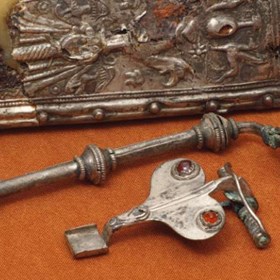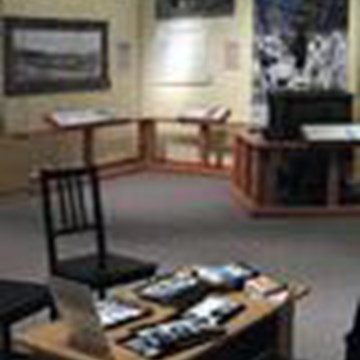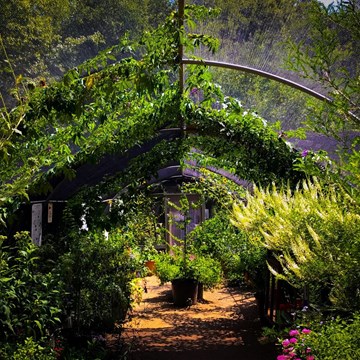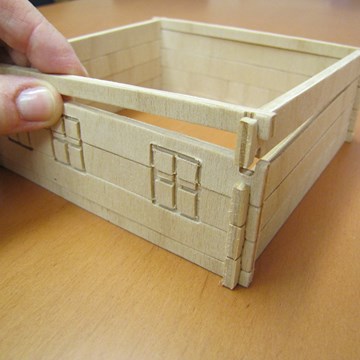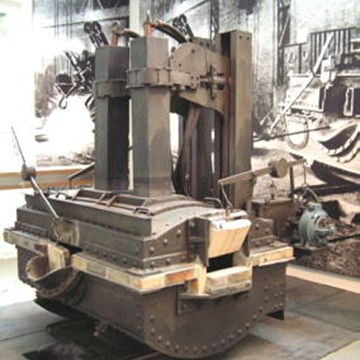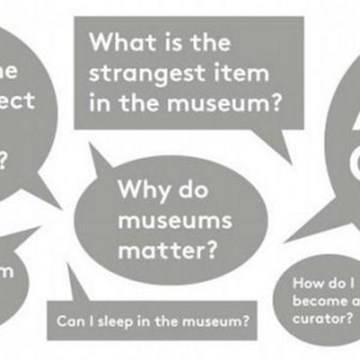Kotor City Lapidarium
Lapidarijum Kotor
The rich collection of stone monuments of the Kotor City Lapidarium started in 1906 thanks to the efforts of the »Antiquarian Society of Boka«, while from the end of World War I the Municipoality of Kotor take care of it, but from 1945 the precious exhibits of stone plastic were predominantly locked up in the different depots, inaccessible to the public, and only not long ago were exposed in specially for this purpose destinated space of the mediaeval church of St Michael.
The present-day church of St Michael was built in the second half of 14th century, over the fundations of one more biger and more older church, the supposed Benedictine abbey of St Michaer from the pre-Romanesque period from 9th to llth century, mentioned in 1166 during the consecration of the Cathedral of St Tryphon, the remains of whose stone altar partition were found during the arshaeological excavations.after the strong Montenegrin earthquake of 1979. The remains of the walls and apse of the older church, partialy fresco decorated, as well as the floor od the special hydraulic mortar are visible from the platform at the lewell of the floor of existing church. The frescoes on the walls and apsis of the existing church are the work of the school of well-known Kotor Gothic painter of the second half of 15th century, Lovro Marinov Dobričević.
The collection of stone monuments of earlier City Lapidarium was enricher with new finds during the sanation works of the sacral monuments after the earthquake of 1979, and during the inarchaeological and architectonical researches in all six Kotor Romanesque sacral buildings of 12th to 14th century. So during the works in the Cathedral of St Tryphon from 1166 were found the remains of the bottoms of the primordial church – martyrium from the beginning od 9th century and a big number of fragments of inscriptions and decorative elements from Roman, early-Cristian and pre-Romanesque period of the life of the town of Kotor, than under the church of St Mary »of the river« (Coleggiata or of Blessed Osanna) from 1221 the remains of an early-Cristian basilica with baptistry from the first half of the 6th century with the fragments of the pre-Romanesque stome church furniture, partially exposed in the sacristy; at the church of St Lucas from 1195 there is reconstructed the original aspect and led roofing from 12th century, at the church of St Paul there were find the remains of earlied church from 1263, immured in the actual church from 16th century, at the church of St Anna were reconstructed the original shape with apses and stone roofing from 13th century, and unter the actual church of St Michael from 14th century were discovered the remains of an earlier benedictine abbey from 10th or 11th centuries, on whose pavement lied many fragments of pre-Romanesque church furniture, partially reconstructed and exposed in the collection of Lapidarium.
The actual exhibition of Lapidarium exposes the exhibits from Roman period, some of them the world unicats, as well as the portrait of Roman emperor Domitianus from the first century AD, the Illyro-Ronan cone-shaped sepulcral tombstones and the sixsided tombstone with the basket from 2nd and 3rd century, the fragments of early-Cristian epoch from 4th to 8th century and between them the relief of the Crist Lamb, taken of from the façade of the St Mihcael and exchanged by the copy, and the partially reconstructed fragments of the church furniture: the altar partitions – pluteums and teguriums, ciboriums, and so on.
From the great european artistic styles of the Romanesque and Gothic, then the Rennaissance and Baroque, from 12th to 18th century, in the church and in the passage od the south side, there are exposed the fragments of the sacral and civil buildings: the capitals, the decored frames of portals and windows, the coat-of-arms of Kotor aristocracy, and between them the blasons of the families Drago, Vrakjen and Beskuća (»Homeless«), the sepulcral insriptions and blasons, the compelete or fragmented inscriptions, what is completed with the sepulcral inscriptions, cut in the south wall of the church and the Gothic arch of the palace of Kotor merchant Miho Spica from 14th century, at the bottom of the yard.
Text source: http://www.muzejperast.me/index.php?option=com_content&view=article&id=1&Itemid=20&lang=sr
Foto source: http://0.tqn.com/d/goeasteurope/1/0/u/L/-/-/StMihailachurchKotor.JPG
Other venues
Exhibitions and events
We don't have anything to show you here.
Educational programs
We don't have anything to show you here.
Collections
We don't have anything to show you here.



